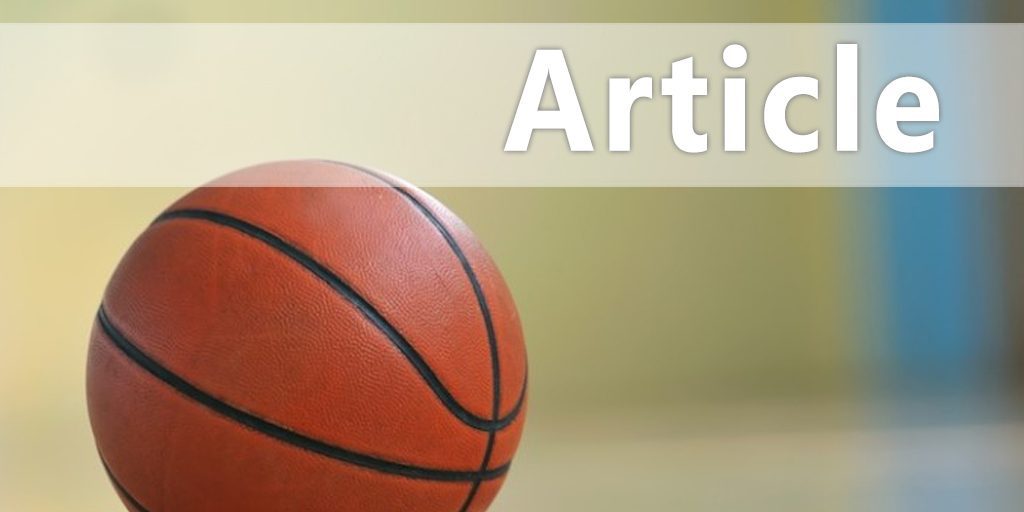| Early Offense Strategy and Keys
You might wonder how this relates to early offense. If a team with lesser talent than yours is able to limit possessions it gives them a better chance to win. What if you have a poor shooting night? What if they shoot well, or what if your team simply plays poorly? The limited number of possessions gives the opponent a better chance to win. However, just like Tiger Woods over the course of 18 holes, the more possessions in a game should favor the more talented team. Even though talent certainly helps; early offense doesn't have to favor just the most talented of teams. Early offense can be used to beat a tough defense down the floor and/or create quick scoring opportunities against a team that may have a significant height advantage. Early Offense can create scoring opportunities inside that you may not get against a bigger team; consistently beating a bigger team down the floor can be a huge advantage to a team that utilizes Early Offense effectively. Early Offense can help generate scoring opportunities in a number of situations. The key to early offense is getting your players to buy into SPRINTING their lanes. All players want to play in an up-tempo offense but not everyone is willing to work hard enough to play an up-tempo style. Being a good early offense team takes a lot more than just rolling out the balls and telling your team to go "Be Fast." Our teams at Centennial have averaged over 76 points a game for the last 5 years. We practice Early Offense every single day. Here are some of our basic Early Offense concepts: Set Spots: Now it's impossible to have everyone go to the same spot every time. However, we would like to have our 2-man in the right land and 3-man in the left lane 80% of the time. Our 1st post guy down looks to establish position on the ball-side low block and our trailing post stops at the 3-point line at the top of the key. We would like our 1-man to declare a side of the floor and get the ball up quick. Passes beat dribbles up the floor every time. |
 |
| Early Offense Plays/Offense: All early offense reads and plays flow directly into our ½ court offense. From these set spots we have 3 reads that the 1-man can make. All of these reads are on opportunity for a quick GOOD shot; if the shot isn't there these reads will also get us into our basic half court offense quickly. NOTE: In practice situations our team has 5 seconds to get a GOOD shot or be into our offense off the reads from the 1-man. We also have several plays that we can run out of early offense. These plays can also be called by the 1-man: You had better have a good point guard that you really trust if you allow them to make a call. All early offense plays, like the 1-man reads, lead directly into our offense if a shot is unavailable.
**An example of a quick hitting Early Offense play: Using the set spots above, 1 passes to 5 who reverses the ball to the 2-man. 4 back-screens for the 3-man who cuts to the ball-side low-block looking for a lay-up. While this is happening the 1 and 5 double screen for the 4, looking for a jump shot at the top of the key. NOTE: It should take no more than 7-8 seconds to get the ball up the court and execute this action. At that speed the defense has little time to react or see the play coming. It's crucial that your team still pays attention to detail: set good screens, set your man up, and cut to score. |
 |
| ** Another example of a quick hitting early Offense play: Using the set spots above, 1 executes a dribble hand-off with 3; the 1 will continue to the corner. 5 needs to see this and follow the play to set a ball-screen for the 3. 3 has the immediate option to "turn the corner" and look to score off the ball-screen or kick to the 2 for an open jump shot if 2's man gives help on the penetration. When the 3 comes off the ball-screen from the 5; 4 comes up and screens the screener, he will look to set a back screen for the 5. This gives the 3 another option. The 3 can look to hit the 5 on a lob or post up opportunity off the ball-screen. After the screen the 4 pops behind the 3-point line. The 3 can throw back to the 4 and look for a high-low opportunity with the 5. If nothing is open the 4 man can down-screen for the 1- coming back up to the top of the key for a jumper; this happens if the 4 wasn't open after his "pick and pop" with the 5.
Take Great Shots: Your players must understand that stressing Early Offense isn't a license to take wild shots. It takes some practice and patience to teach your players how to attack with intelligence. If you're not maintaining good basic fundamentals at a fast pace you are simply just running around. Doing little things right at an increased pace takes time and practice. When starting out its important to stop practice every single time a player takes a bad shot, misses a screen, doesn't cut hard, fails to sprint their lane, etc. Players must know immediately when they didn't execute it correctly. Early Offense Starts With Defense: It's really hard to play at a faster pace when you're pulling the ball out of the net. Most early offense starts with great defense. Even though Early Offense is at its best when you're getting stops, it is possible to get the ball out quick and SPRINT the floor on made shots. Again, this takes time in practice to teach your players to take off and SPRINT when they do get scored on. Conditioning: The 3 most hated weeks in our program is the 3 weeks prior to the beginning of practice in November. Over the course of 3 weeks we have 10 days of conditioning that are without exaggeration, BRUTAL. If you want to successfully use Early Offense as a component to your program you have to condition your team. You don't have to be the most athletic team or the fastest team to have success with Early Offense; you just have to be willing to SPRINT harder than your opponent for 84 feet. Then do it over and over again; this takes conditioning. This does not mean running lines throughout a practice; to me that is the biggest waste of practice time there is. You can get anyone at your school to run back and forth; I want basketball players with skill, we use practice time to practice. However, as in the case with our program, practice can be structured so conditioning is being tested throughout the practice. For example; virtually every 1 on 1, 2 on 2, 3 on 3, 4 on 4, or 5 on 5 drill we do in practice is a full court drill. All drills are broken up between several baskets; there is no 1 line of players waiting a minute between each repetition. 2-3 players maximum at a basket and it's about 5 seconds of rest between each repetition. There are no breaks and there is no wasted time between drills. Being an effective Early Offense team doesn't require that your team is the most athletic or the fastest; it simply requires that your team is the most committed. These 5 concepts have really benefited our program and our ability to efficiently execute in early offense. |
|
About the Author... |
|
|
| Josh Giles has been the Boy's Varsity Basketball Coach at Corona Centennial High School in Corona California for the last 8 years. Over the last 5 seasons his team has won 135 games and lost 24. Over Coach Giles' entire 8 years at Centennial they have an over-all record of 185-61.
During Coach Giles' tenure at Centennial they have won 5 league championships, won a CIF Southern Section Championship in 2007, CIF Southern Section Runner-Up in 2011, State Semi-Finalist in 2011. 5 times Josh Giles has been named the League Coach of the year and has twice been named the CIF Southern Section Coach of the Year. Before going to Centennial High School Josh Giles was an assistant Coach for 3 years at Glendora High School; Giles also played at Glendora where he was an ALL-STATE point guard. Giles also attended Concordia University in Irvine California where he was a 2-time All American and still holds the university's all-time scoring and assist records. |


